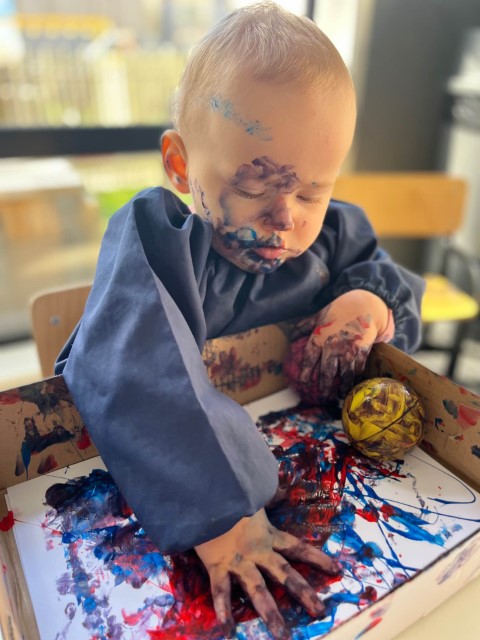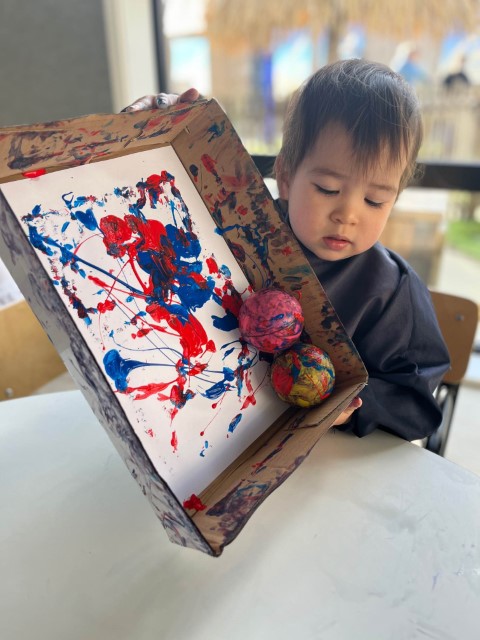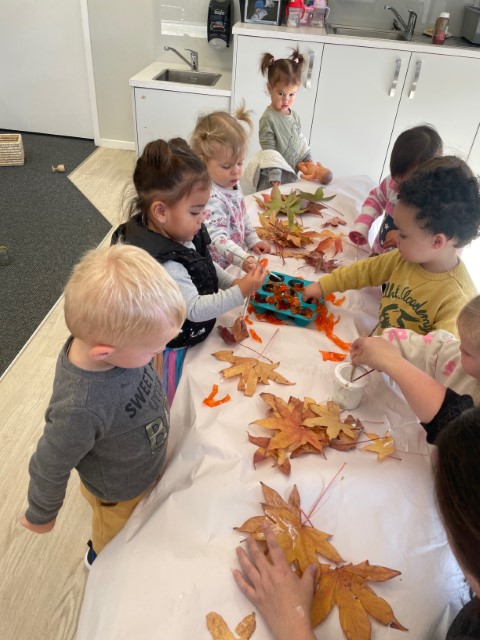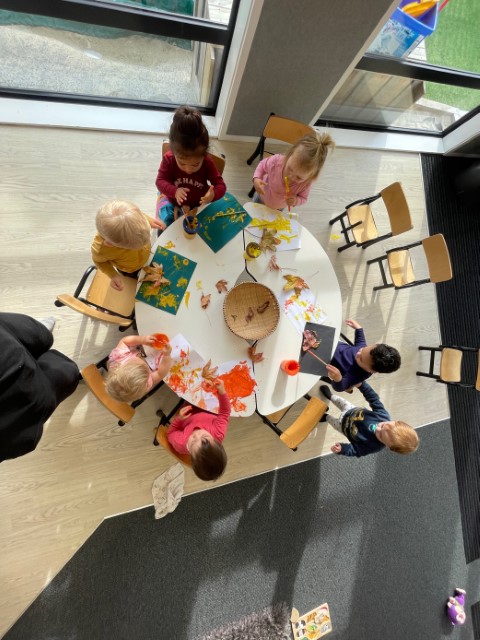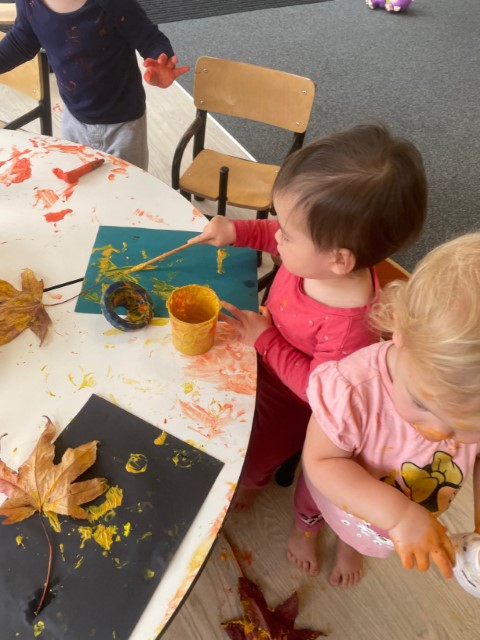LATEST STORIES
Creative Art experiences
In the Tui room we provide our tamariki with a variety of creative art experiences. Art is important because it is an opportunity for tamariki to express themselves and learn through exploration. Painting is a fantastic sensory experience, art provides an opportunity to feel the paint between our fingers and toes learning how the paint moves. We expand tamariki’s vocabulary by offering descriptive words such as cold, wet, and smooth.
Sensory play is open-ended naturally fostering independence. Tamariki are learning what happens when we mix different colours together. We provide a variety of different tools to paint with to extend tamariki’s thinking and knowledge. We provided leaves without instruction to allow the tamariki to freely explore the paint and leaves if they wanted to.
The tamariki feel the leaves and paint separately at first until someone is bold enough to combine the two and slowly as their friends observe more tamariki become brave enough to try mixing the leaves and the paint. We provided squeezy bottles filled with a variety of paints and popsicle sticks allowing the tamariki to freely explore the resources provided. The squeezy bottles help tamariki to develop their fine motor skills which are important for writing in the future as well as developing their grip for climbing. The popsicle sticks allow tamariki to extend their thinking and build more knowledge about how the paint moves and interacts with the stick.
Art provides opportunities to have calm and engaged interactions. Our tamariki work together sharing resources and collaborating on bigger art pieces that we display in our room. The tamariki learn great social skills by sharing, co-operating and including others. Through paint the tamariki can express their thoughts and feelings whether they are able to verbally communicate or not. Art experiences play a vital role in the development of a child, with artistic thinking providing a particular way of conceiving reality, and therefore, similar to how children construct knowledge in play, their artistic learning and activities need to make sense to them, embedded in their own experiences (Vecchi, 2010; May, 2013; Barton, 2015). Participating in the arts plays a crucial role in the way a child makes sense of their environment, their world, and ultimately, themselves.



